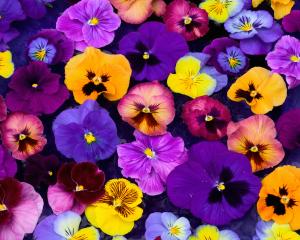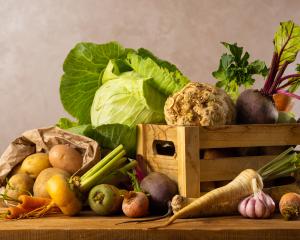
Garden centres are reporting huge sales of fruit trees this winter, with several popular varieties selling out.
"Three seasons ago, fruit trees were for a few very keen gardeners and now the demand is huge," Nichol's Garden Centre Dunedin store manager Karen Speer says.
A presentation at the garden centre last week by Nathan Milne, general manager of wholesale tree company Allenton Nurseries, of Ashburton, gave 80 gardeners important tips on fruit trees and how to prune them.
Before putting in a tree, he said, consider these factors:
• How much space you have. Some fruit trees grow big.
• Climatic conditions. The bottom of a hill is generally frostier, as frost flows downhill. If you are on the coast, sea spray can damage trees.
• Clay soils retain water and wet ground causes root rot, especially in apples.
• To find out what soil type you have, Nathan recommends soil tests so deficiencies can be corrected. Too much nitrogen, for example, and trees will have lots of leaves and not much fruit.
• Apricots, peaches, nectarines and cherries, as well as many plums and pears, need two compatible trees for cross-pollination. Double or triple-grafted trees (two or three on one rootstock) are an option for the small garden.
Nathan describes the best site for fruit trees as one that gets four to five hours sunshine a day from bud movement, the time in late winter or early spring when buds swell, but before flowers and leaves are seen.
Fruit trees are grafted on to different rootstocks and these are given on most tree labels.
If you have clay soil, 116 rootstock is the one to look for.
Dwarf trees, a popular choice for small gardens, can grow in containers, and bear full-sized fruit.
They have big crops for their size and begin fruiting when younger than full-sized trees, Nathan says.
Their only drawback is that they are relatively short-lived compared with a full-sized tree, which will live 30 years or more.
To encourage bees to visit your fruit trees, he suggests planting lavender or annuals that flower at the same times.
We're buying . . .
Dunedin
Apples are No 1. Monty's Surprise is the top choice, followed by Peasgood Nonsuch.
Pears, particularly double-grafted varieties, are next.
Damson and self-fertile plums are also selling well.
South Otago
The demand is for apples (Gala and Braeburn), pears (Conference) and plums.
Central Otago
Apricots are the big sellers, peaches and nectarines next.
North Otago
More people are putting in orchards, so "everything's popular", Breens Nursery, in Oamaru, says.
Top apple is Peasgood Nonsuch; red-fleshed plums are also popular.













